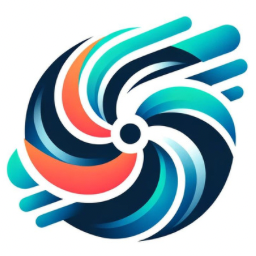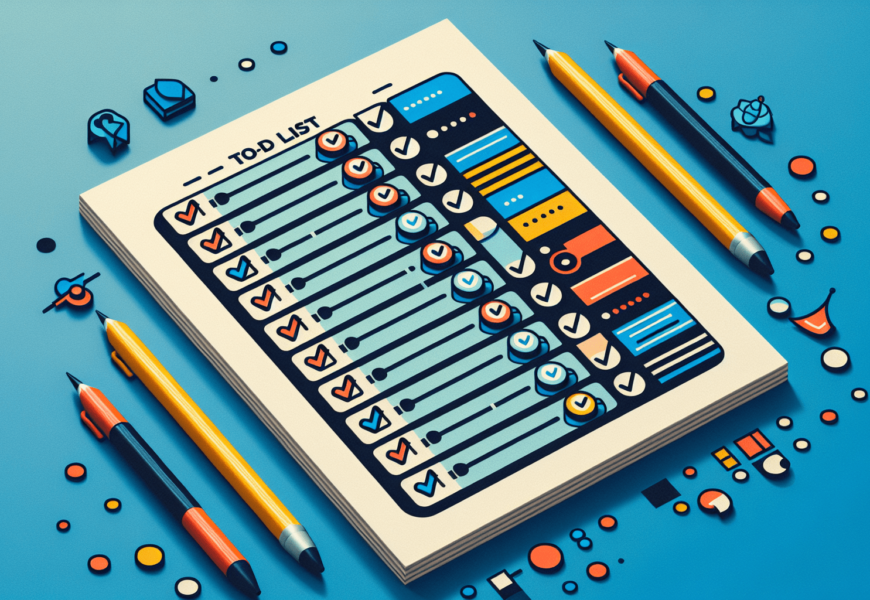Are you struggling to keep track of your tasks and stay organized? Look no further! In this comprehensive guide, you will discover everything you need to know about task management systems. From the basics of what they are and how they work, to different types of systems and their features, this article has got you covered. Whether you’re a busy professional trying to juggle multiple projects or just someone looking to increase productivity, this guide will help you find the perfect task management system to suit your needs. Get ready to take control of your tasks and conquer your to-do list like a pro!
Understanding Task Management Systems
What is a task management system?
A task management system is software or a platform that helps individuals and teams organize, track, and prioritize their tasks effectively. It provides a centralized location to create, assign, and monitor tasks, ensuring that everyone involved in a project has visibility and accountability. Task management systems typically offer features such as task creation, assignment, deadline tracking, task categorization, and collaboration tools.
Why do you need a task management system?
A task management system is essential for individuals and teams who want to streamline their workflow and achieve optimal productivity. By using a task management system, you can ensure that tasks are organized, prioritize tasks, and track progress effectively. It helps in assigning tasks, setting deadlines, and establishing clear communication channels, ensuring that everyone understands their responsibilities and can work towards common goals. Task management systems also provide visibility into the overall project’s status, allowing for better decision making and resource allocation.
Key features of a task management system
A comprehensive task management system includes several essential features that enable efficient task tracking and collaboration. These features may include task creation and assignment, deadline management, task categorization and prioritization, notifications and reminders, progress tracking and reporting, file attachments, comments, and collaboration tools. Some task management systems also offer advanced features such as automation, integration with other tools and software, and advanced customization options. These features ensure that users can customize the system to their specific needs and enhance productivity.
Choosing the Right Task Management System
Identify your needs and goals
To choose the right task management system, you need to first identify your specific needs and goals. Determine what features and functionalities are crucial for your team’s workflow. Consider factors like the size of your team, the complexity of your projects, and the level of customization required. Understanding your needs and goals will help you narrow down the options and find a system that aligns with your specific requirements.
Consider your team’s requirements
When selecting a task management system, it’s essential to take into account your team’s requirements and preferences. Involve your team members in the decision-making process to ensure that the system meets their needs and preferences as well. Consider factors such as user-friendliness, ease of collaboration, and integration with other tools your team uses. By considering your team’s requirements, you can choose a system that will be readily adopted and integrated into your team’s workflow.
Evaluate available options
There are various task management systems available in the market, each with its own set of features and benefits. Take the time to research and evaluate different options. Read reviews, compare features, and consider factors like ease of use, scalability, and customer support. Make a list of the systems that best align with your needs and goals, and then narrow down your options based on your evaluation.
Free vs. paid task management systems
When choosing a task management system, you’ll come across both free and paid options. Free task management systems can be a great starting point for smaller teams or individuals with limited budgets. However, keep in mind that free systems often come with limitations and may lack advanced features. Paid task management systems usually offer more robust features, better support, and enhanced security. Consider your budget and the specific needs of your team before deciding between a free or paid system.
Cloud-based vs. on-premises systems
Another important factor to consider when choosing a task management system is whether you want a cloud-based or an on-premises solution. Cloud-based systems offer the advantage of accessibility from anywhere with an internet connection, automatic backups, and easy collaboration. On the other hand, on-premises systems provide more control over data security and customization options. Consider factors like data privacy, IT infrastructure, and the level of control you need before deciding between cloud-based and on-premises systems.
Implementing a Task Management System
Set up user accounts and permissions
Once you’ve selected a task management system, the first step in implementing it is to set up user accounts and define permissions. Create user accounts for each team member and assign appropriate roles and permissions. This ensures that everyone has access to the tasks and features relevant to their responsibilities and prevents unauthorized access to sensitive information or settings.
Define task categories and priorities
Task categorization and prioritization are crucial for effective task management. Define relevant categories and priorities within your task management system. Categories can help you organize tasks based on projects, departments, or other criteria. Prioritization allows you to determine the urgency and importance of each task. By defining clear categories and priorities, you can easily filter and focus on tasks that require immediate attention.
Establish deadlines and reminders
Timely completion of tasks is essential for project success. Set deadlines for each task and establish reminders to ensure that tasks are not delayed. Task management systems typically allow you to set due dates and send reminders to task assignees. By establishing deadlines and reminders, you can keep everyone accountable and ensure that tasks are completed within the specified time frame.
Integrate with other tools and software
To streamline your workflow, consider integrating your task management system with other tools and software your team uses. Integration with tools like email clients, calendar applications, communication platforms, and project management software can help consolidate information and reduce manual effort. Automation and synchronization between systems boost efficiency and ensure that everyone is on the same page.
Ensure user adoption and training
Implementing a task management system requires user adoption and training. Ensure that your team members understand how to use the system effectively. Provide training sessions or tutorials to familiarize them with the features and functionalities. Encourage team members to adopt the system and use it consistently. User adoption ensures that everyone is actively participating in the task management process, leading to better collaboration and productivity.
Best Practices for Task Management
Break tasks into smaller subtasks
Breaking tasks into smaller subtasks helps in managing complexity and tracking progress more effectively. Instead of having one large task, divide it into smaller, more manageable subtasks. This allows for better delegation, accurate time estimation, and easier progress tracking. By breaking tasks into smaller subtasks, you can also ensure that team members have a clear understanding of what needs to be done.
Set realistic deadlines and prioritize tasks
Setting realistic deadlines is essential to avoid task overload and ensure that team members have ample time to complete their work. Consider factors like task complexity, resource availability, and other obligations when setting deadlines. Additionally, prioritize tasks based on their urgency and importance. This helps in ensuring that critical tasks are given the necessary attention and completed on time.
Use task labels and tags effectively
Task labels and tags enhance task organization and filtering. Assign specific labels or tags to tasks based on their nature, status, or priority. This allows for easy searching, categorization, and filtering of tasks. By effectively using labels and tags, you can focus on tasks that require immediate attention, track progress across different categories, and quickly identify critical tasks.
Communicate and collaborate with team members
Effective communication and collaboration are vital for successful task management. Utilize communication features within your task management system to provide updates, seek clarifications, and discuss tasks with team members. Collaboration tools like comments, file attachments, and notifications help in maintaining clear lines of communication and ensuring that everyone is aligned towards the project goals.
Regularly review and update task status
Regularly reviewing and updating task status is crucial to stay on track and address any issues promptly. Set aside dedicated time to review tasks, assess progress, and update their status. Identify any roadblocks or delays and take appropriate action. Regular updates help in keeping everyone informed and allow for proactive problem-solving.
Advanced Features and Integrations
Automated task assignment and routing
Some task management systems offer the capability to automate task assignment and routing. This feature allows you to set predefined rules or triggers that automatically assign tasks to specific team members based on certain criteria or conditions. Automated task assignment and routing reduce manual effort, ensure equitable task distribution, and streamline task allocation processes.
Gantt charts and timeline visualization
Gantt charts and timeline visualization provide a visual representation of tasks and their dependencies. These features allow you to create project timelines, set milestones, and track progress across multiple tasks. Gantt charts help in understanding task relationships, identifying critical paths, and visualizing the overall project timeline. Timeline visualization enhances project planning and helps in effective resource allocation.
Kanban boards for agile task management
Kanban boards offer a visual representation of tasks and their stages. They are particularly useful for agile task management methodologies like Scrum or Kanban. Kanban boards allow you to create task cards and move them across different stages such as “To Do,” “In Progress,” and “Done.” This visual workflow management helps in improving task visibility, tracking progress, and maintaining a continuous flow of work.
Integration with email and calendar systems
Integration with email and calendar systems ensures seamless communication and synchronization between your task management system and your email client or calendar application. This integration allows you to create tasks directly from emails, sync tasks with your calendar, and receive task-related notifications in your email inbox. Integration with email and calendar systems eliminates the need for switching between different platforms and enhances productivity.
APIs and third-party app integrations
Task management systems often provide APIs (Application Programming Interfaces) that allow developers to create custom integrations with other applications or build extensions. These APIs enable integration with a wide range of third-party apps, such as productivity tools, project management software, or messaging platforms. By leveraging APIs and third-party app integrations, you can customize your task management system and improve your workflow.
Task Management for Different Work Environments
Task management for remote teams
Managing tasks in a remote team requires additional considerations. In remote work environments, it’s crucial to have a task management system that provides easy collaboration, real-time updates, and clear communication channels. Look for features like shared workspaces, chat integrations, remote access, and mobile app support. Additionally, ensure that your task management system enables easy sharing of files and documents to facilitate remote collaboration.
Task management for freelancers and solopreneurs
Freelancers and solopreneurs often undertake multiple projects simultaneously. For effective task management, they need a system that allows them to track tasks, set priorities, and manage deadlines across different projects. Look for a task management system that provides features like task labels, milestone setting, and time tracking. Additionally, freelancers can benefit from automated reminders, project templates, and integration with invoicing tools to streamline their workflow.
Task management for software development
Software development teams require specific task management features tailored to their unique workflow. Look for a system that supports agile methodologies like Scrum or Kanban, and offers features like task dependencies, version control integration, and bug tracking. Additionally, software development teams may benefit from features like code repository integration, issue tracking, and collaborative code review within their task management system.
Task management for project management
For project management purposes, a task management system should provide a comprehensive set of features to coordinate tasks, timelines, and resources effectively. Look for a system that allows for task dependencies, resource allocation, progress tracking, and project reporting. Integration with project planning and documentation tools, communication platforms, and team collaboration features are also valuable for project managers.
Popular Task Management Systems
Trello
Trello is a highly popular task management system known for its intuitive Kanban board interface. It allows users to create, organize, and track tasks using cards that can be moved across different lists or boards. Trello offers features like task assignments, due dates, labels, attachments, and integrations with various third-party applications. Its simplicity and versatility make it a popular choice for individuals and small teams.
Asana
Asana is a robust task management system that provides a wide range of features for team collaboration and project management. It offers task creation, assignment, due dates, priority setting, and various customization options. Asana also provides features like timeline visualization, team calendars, and automation. With its mobile app and integrations with other tools, Asana is widely used by both small and large teams.
Todoist
Todoist is a simple yet powerful task management system designed for individual users. It offers an easy-to-use interface and features like task creation, due dates, priority levels, and labels. Todoist also provides features for collaboration, such as task sharing, comments, and attachments. Its cross-platform availability and integration with other apps make it a popular choice for individuals looking for a straightforward and effective task management system.
Wrike
Wrike is a comprehensive task management system that offers features for project planning, team collaboration, and task tracking. It provides tools for task creation, assignment, deadline management, and progress tracking. Wrike also offers advanced features like Gantt charts, workload management, and customized reporting. It is commonly used by medium to large-sized teams that require robust project management capabilities.
Microsoft To-Do
Microsoft To-Do is a task management system that integrates seamlessly with other Microsoft productivity tools. It offers a clean and simple interface for creating and organizing tasks. Users can set due dates, create task lists, and add subtasks. Microsoft To-Do also synchronizes tasks across devices, integrates with Outlook, and supports collaboration features in shared lists. It is a popular choice for individuals and teams already using Microsoft’s ecosystem.
Comparing Task Management Systems
User interface and ease of use
When comparing task management systems, user interface and ease of use should be considered. Look for systems with intuitive interfaces and easy navigation to ensure a smooth user experience. Consider factors like drag-and-drop functionality, visual representation of tasks, and customizable layouts. A user-friendly interface encourages user adoption and reduces the learning curve for new team members.
Collaboration and communication features
Effective collaboration and communication features are crucial for task management. Compare systems based on features like task comments, file attachments, notifications, and real-time updates. Integration with communication platforms like Slack or Microsoft Teams can also be beneficial. Choose a system that facilitates seamless communication and collaboration, making it easier for team members to work together efficiently.
Mobile app availability
In today’s mobile-driven world, mobile app availability is a key consideration for task management systems. Check if the systems you are comparing offer mobile apps for iOS and Android devices. Look for features like task creation, updates, and notifications on mobile. A mobile app allows team members to access and manage their tasks on the go, improving flexibility and productivity.
Advanced features and customization options
Evaluate task management systems based on the advanced features and customization options they provide. Consider features like automation, integrations with third-party apps or APIs, advanced reporting, and customization of workflows or templates. Advanced features and customization options enable tailoring the task management system to your specific needs, enhancing efficiency and effectiveness.
Pricing and subscription plans
Pricing is an important factor when comparing task management systems. Consider the cost of the system based on the number of users or team members. Compare pricing models, such as monthly or annual subscriptions, and evaluate what features are included in each plan. Look for systems that offer value for money based on your specific requirements and budget.
Task Management on the Go
Mobile task management apps
Mobile task management apps allow you to manage your tasks and collaborate with your team while on the go. These apps provide access to your task management system from your smartphone or tablet. Look for apps that offer features like task creation, updates, attachments, and notifications. Mobile task management apps ensure that you stay connected and productive, no matter where you are.
Syncing and offline access
Syncing and offline access are essential for accessing your task management system even without an internet connection. Choose a task management system that offers automatic syncing across devices, ensuring that your task information is always up to date. Additionally, consider systems that allow for offline access, allowing you to view and update tasks even in situations with limited or no internet connectivity.
Notification and reminders
Notification and reminder features are crucial for staying on top of your tasks and deadlines. Look for task management systems that offer customizable notifications and reminders. These features can notify you via email, push notifications, or in-app alerts, ensuring that you never miss an important task or deadline. Notification and reminder functionality helps in maintaining accountability and ensuring timely task completion.
Future Trends in Task Management
Artificial intelligence and smart assistants
The future of task management systems is expected to incorporate artificial intelligence (AI) and smart assistants. AI can help automate tasks, predict task completion times, and provide intelligent task prioritization based on factors like deadlines, workload, and resources. Smart assistants, like voice-powered virtual assistants, can further enhance task management by allowing users to create and manage tasks hands-free, improving accessibility and user experience.
Voice-based task management
Voice-based task management is gaining popularity as voice recognition technology advances. Voice commands can be used to create tasks, update task status, set deadlines, and perform other actions within the task management system. Voice-based task management allows for quick and convenient task management, particularly in situations where manual input may not be possible or efficient.
Integration with virtual and augmented reality
Virtual and augmented reality (VR and AR) technologies have the potential to revolutionize task management. Integration with VR and AR can provide immersive task visualization and interaction. Users can visualize tasks in 3D space, manipulate virtual task cards, and collaborate in virtual environments. VR and AR technology can enhance collaboration, visualization, and engagement in task management systems.
Predictive analytics for task planning
Predictive analytics can be utilized to improve task planning and resource allocation. By analyzing historical data and patterns, task management systems can predict potential bottlenecks, estimate task completion times, and suggest optimal task assignments. Predictive analytics enable better decision-making, resource optimization, and more accurate project planning.
Cross-platform and universal task management
Cross-platform and universal task management systems aim to provide seamless integration across multiple devices and platforms. These systems allow users to manage their tasks from various devices, including smartphones, tablets, laptops, and desktop computers. Cross-platform and universal task management ensures that users have consistent access to their task information, regardless of the device or operating system they are using.







